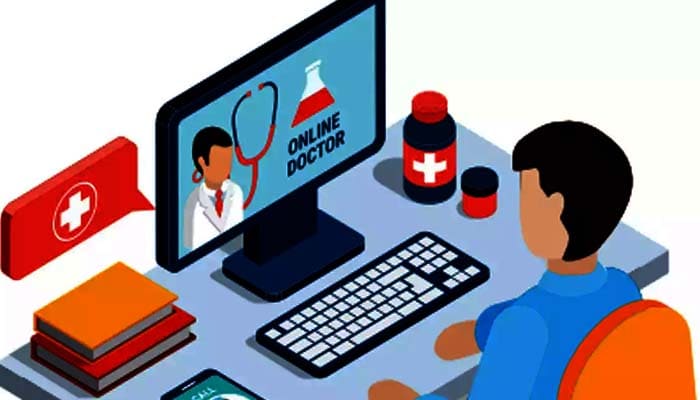What is the Difference Between Telehealth, Telemedicine and Telecare?
Multiple factors including the COVID-19 pandemic and the proliferation of mobile devices have significantly affected the amount of the number of patients who got remote clinical services via the global telehealth and telemedicine market. The future of healthcare delivery will rely on solutions such as remote medical assistance.
There can be some confusion regarding the difference between telecare, telehealth, and telemedicine that are all commonly used when discussing remote healthcare. While these terms are all related, they address different aspects of providing healthcare remotely. In this article, we will look closely at telehealth vs telemedicine and telecare and identify how they differ.

What is Telehealth?
As you can see from the illustration, the term telehealth is a catch-all that encompasses many activities performed electronically with the intention of improving healthcare. It is not confined to telecommunication technologies or healthcare software, but also covers employee training, medical education or administrative meetings,etc. In fact, telecare and telemedicine are just facets of telehealth that focus on providing remote clinical services.That is the main difference between these terms.

Different Types of Telehealth Processes
There are several examples of telehealth:
- • Remote patient monitoring is a telehealth solution that can be performed to monitor chronic conditions such as asthma or blood sugar level, providing real-time data for healthcare professionals and software applications.
- • Facilitating administrative meetings in the interest of improving healthcare through electronic communications is considered a telehealth activity.
- • Employee training in the healthcare field is another category of telehealth that cannot be ignored. It’s important to ensure that the healthcare workforce is educated about the technology and regulatory standards associated with their jobs.
- • Counseling and mental health services delivered electronically and over the phone qualify as telehealth support.
- • Patient portals used to dispense healthcare information can be considered both telehealth and telemedicine solutions.
What is Telemedicine?
Telemedicine is a subset of telehealth that primarily refers to providing patients with remote clinical services. Electronic communication and software solutions are used to offer telemedical services to individuals without the need to conduct a physical meeting with a healthcare provider. Speaking about the difference between telehealth and telemedicine, only certain types of healthcare can be obtained through telemedicine solutions, as procedures that require physical contact like operations cannot currently be performed remotely.

The World Health Organization (WHO) defines telemedicine as “the delivery of health care services, where distance is a critical factor, by all health care professionals using information and communication technologies for the exchange of valid information to improve the health of individuals and their communities.”
What are Examples of Telemedicine?
Virtual doctor’s visits, remote monitoring of post-operative patients or scheduling appointments via healthcare portals are typically examples of telemedicine solutions. What’s more, there are another telemedicine applications:
- • Online screening and remote patient engagement can be performed before individuals enter a healthcare facility.
- • Patients can engage in virtual consultations with specialists that would be beyond their reach using traditional healthcare delivery methods.
- • Information that contributes to better outcomes.
- • Telehealth and telemedicine support for the individuals in rural areas enables a larger percentage of the population to benefit from innovative healthcare techniques and information.
- • Virtual dentist visits are another application of telemedical that can help bring healthcare to a wider audience.
What is Telecare?
Telecare is another subset of telehealth. It is a specific application of telehealth support services that is designed to remotely monitor patients from their homes and provide them with more independence and safety. Multiple technologies are used to provide telehealth solutions for patients who need to be watched continuously or are at heightened risk of injury. Telecare makes it possible for healthcare professionals to remain in constant contact with their patients.

Conclusion
It can be confusing to differentiate between telecare, telehealth, and telemedicine. The common characteristic of the three terms is their use in bringing healthcare to a larger share of the population. Telehealth essentially refers to all electronically performed activities related to improving society’s healthcare. It includes the administrative and educational components of healthcare. Telemedicine and telecare are subsets of telehealth designed to interact with individuals to promote better healthcare outcomes.
FAQ
How Is a Telemedicine Visit Done?
Is a Phone Call Considered Telehealth?
What Are the 3 Different Types of Telemedicine?
- • Real-time telemedicine such as virtual doctor’s visits that use mobile devices or computers;
- • Store-and-forward telemedicine where healthcare providers share patient information using secure and dedicated software solutions;
- • Remote patient monitoring that enables healthcare professionals to track the condition of physically distant patients.
What Documentation Is Required for Telehealth?
- • The method of telehealth;
- • The location of the provider;
- • A list of all clinical participants and their roles;
- • Patient location;
- • Time spent on the visit;
- • Patient consent.